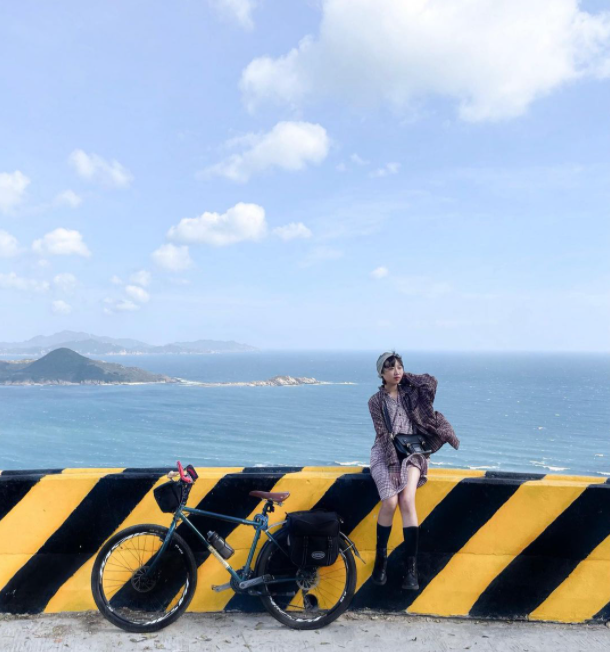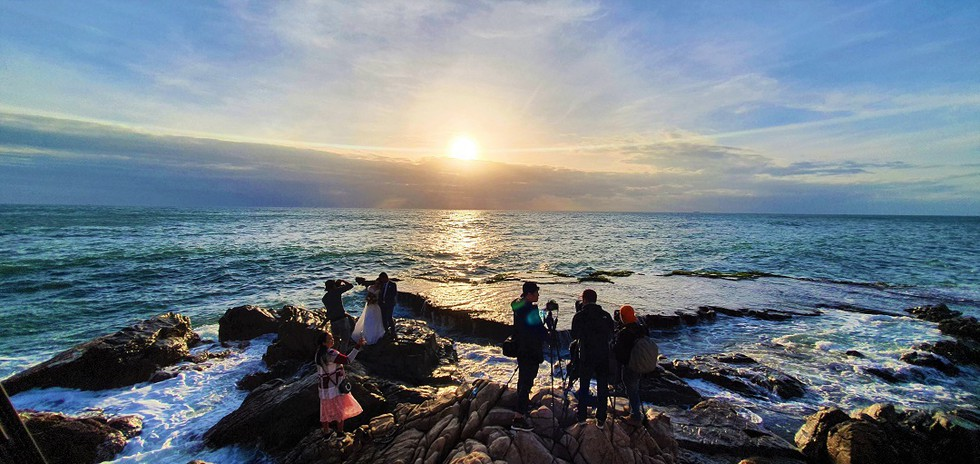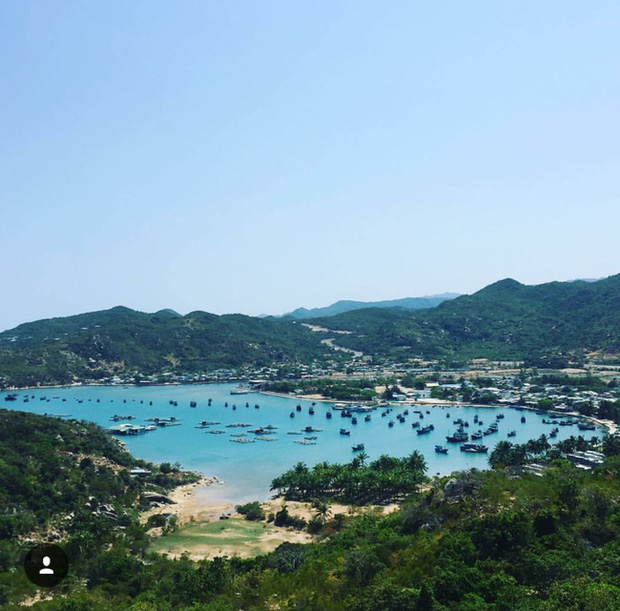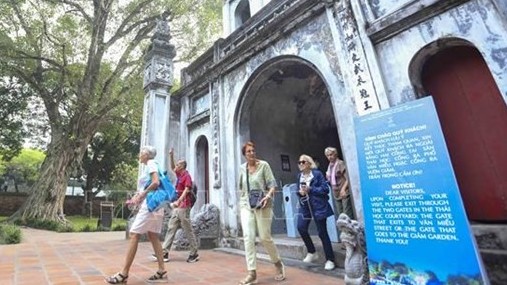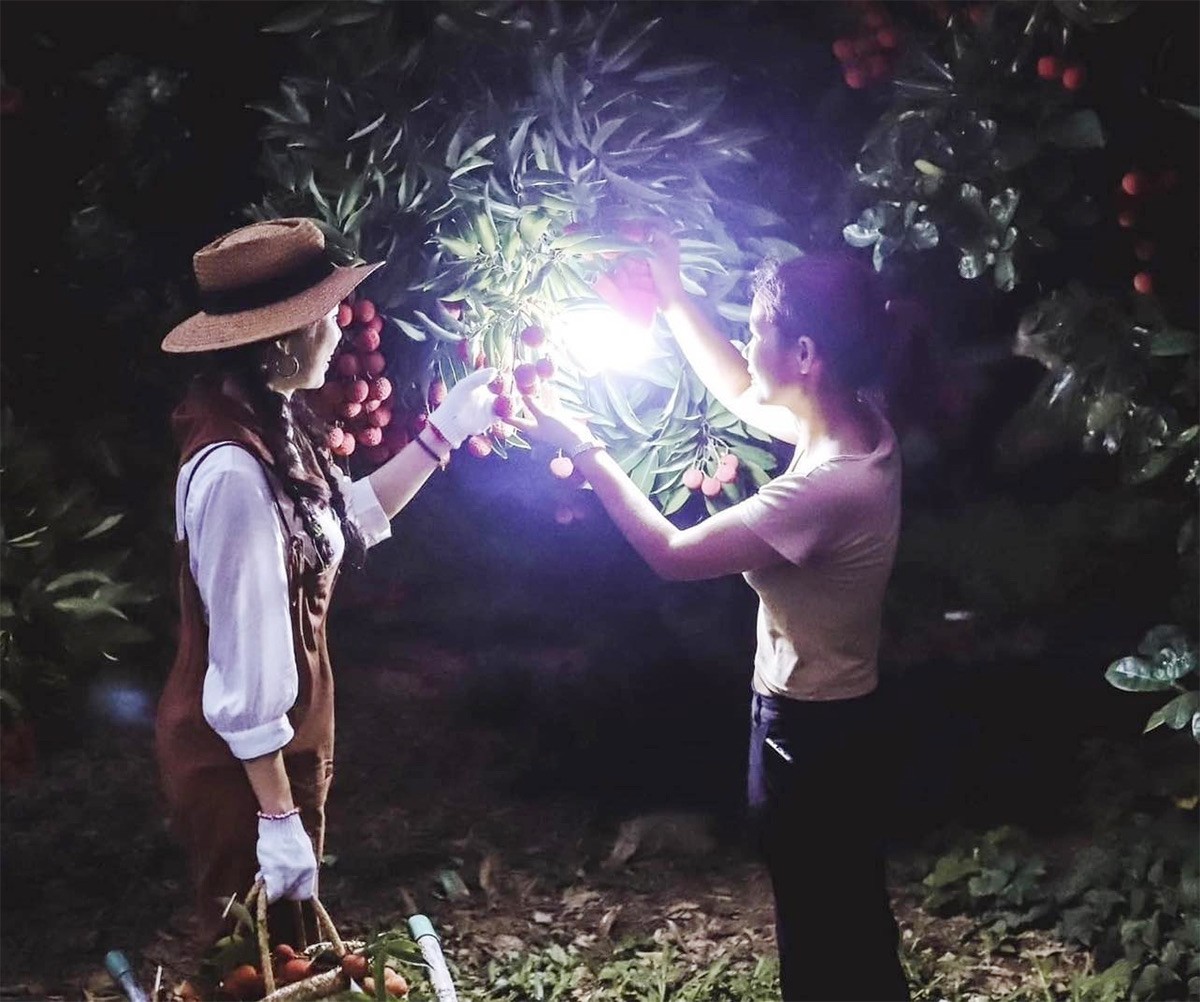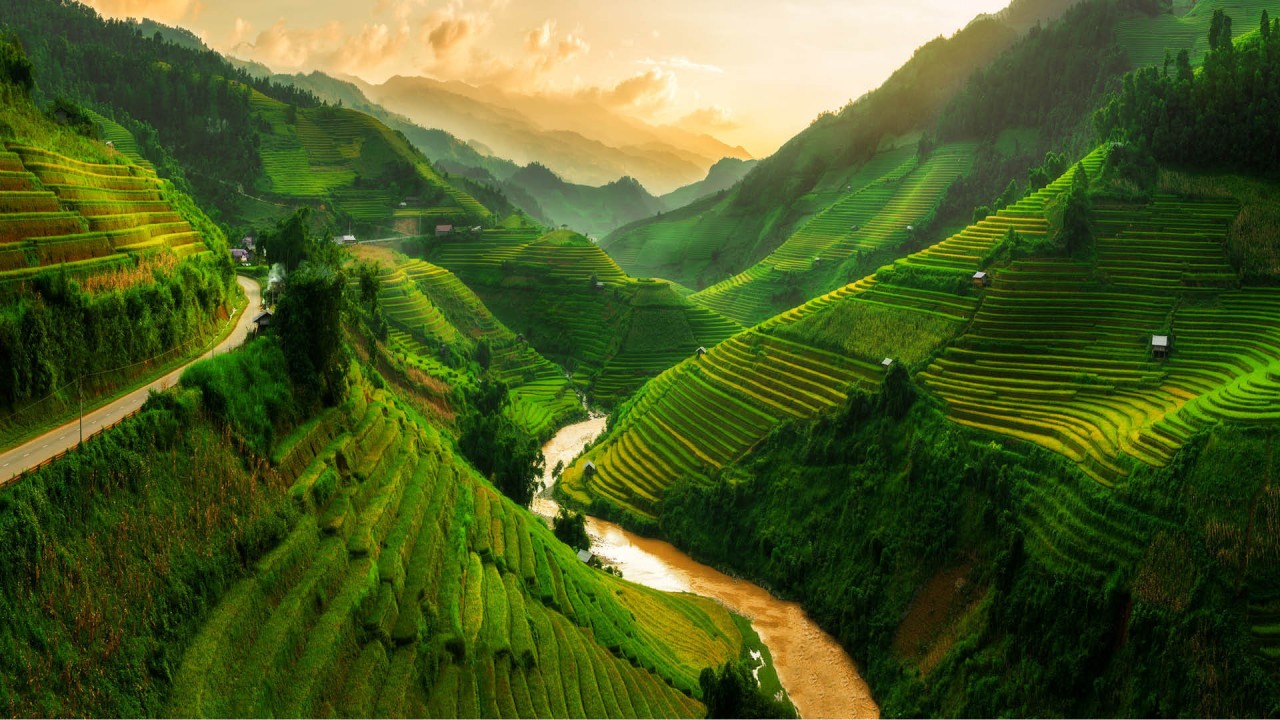Ninh Thuan's Fascinating Champa Culture
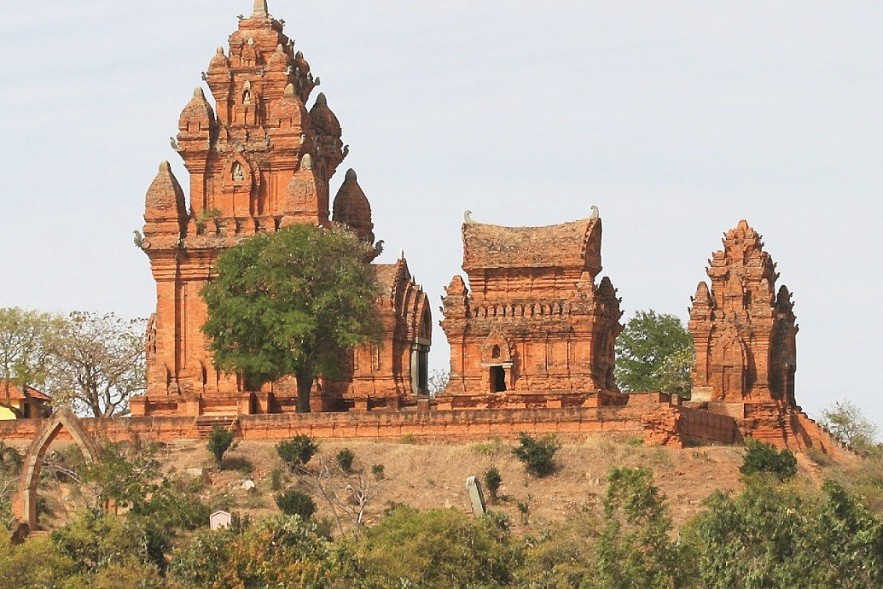 |
| Well-known Poklong Garai (Indigo tower) in Ninh Thuan |
Ninh Thuan: the land of cacti, the land of sunshine, wind and sand, the fire pan of Vietnam. Coming to Ninh Thuan, it is impossible not to know the Cham tower or the Poklong Garai Champa tower, still standing tall on the hill overlooking the whole city as a historical witness to Ninh Thuan changes.
Po Klong Garai is one of the few clusters of significant Cham tower monuments preserved intact. Through many ups and downs, the towers still retain the meticulously sculpted, sophisticated and beautiful patterns on the arches, pillars, roof frills and the Poklong Garai tower cluster is considered a symbol of tourism of the land of the cactus.
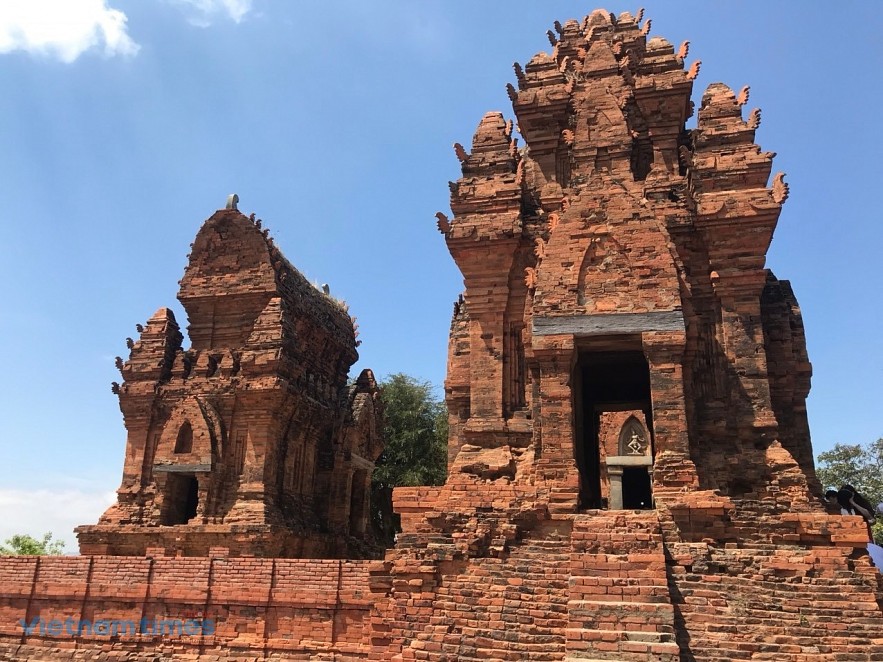 |
| Cham Tower in Ninh Thuan Province. Photo Thuy Hang |
The tower was built in the late 13th and early 14th centuries (in the reign of King Che Man) to worship King Po Klong Garai (1151 - 1205), who was instrumental in leading the Cham people to resist foreign invaders and stabilize the land and agricultural development and was revered by the Cham people as the god of irrigation.
Today, the Po Klong Garai Cham tower complex has three important buildings remaining: the main tower (Kalan tower - 20.5 meters high, in the middle in the photo), the gate tower (Gopura tower - 9.31 meters high, on the right) ) and fire tower (Kosaghra tower – 8.56m high, left side).
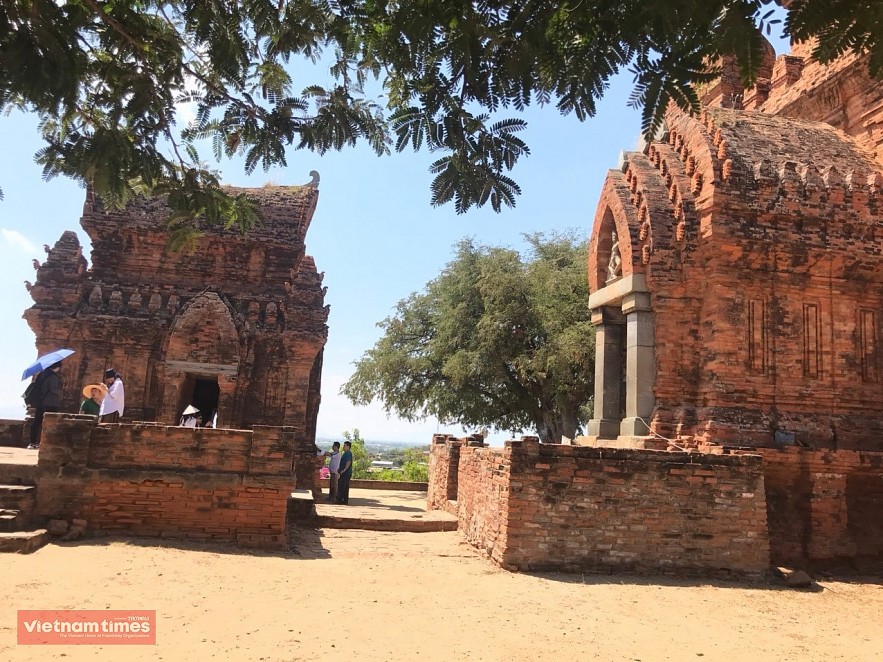 |
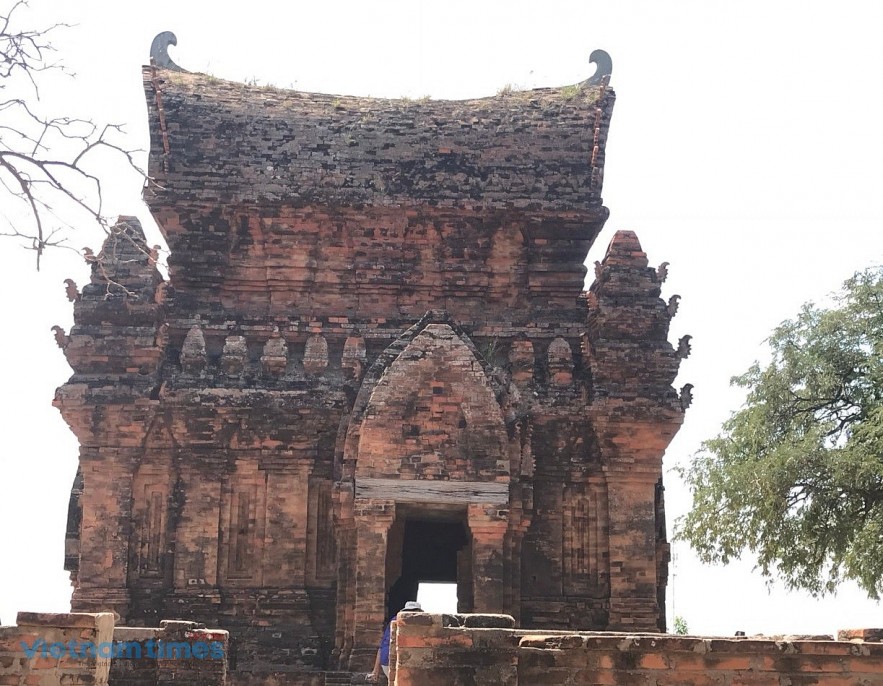 |
| Kosaghra tower – 8.56m high, left side. |
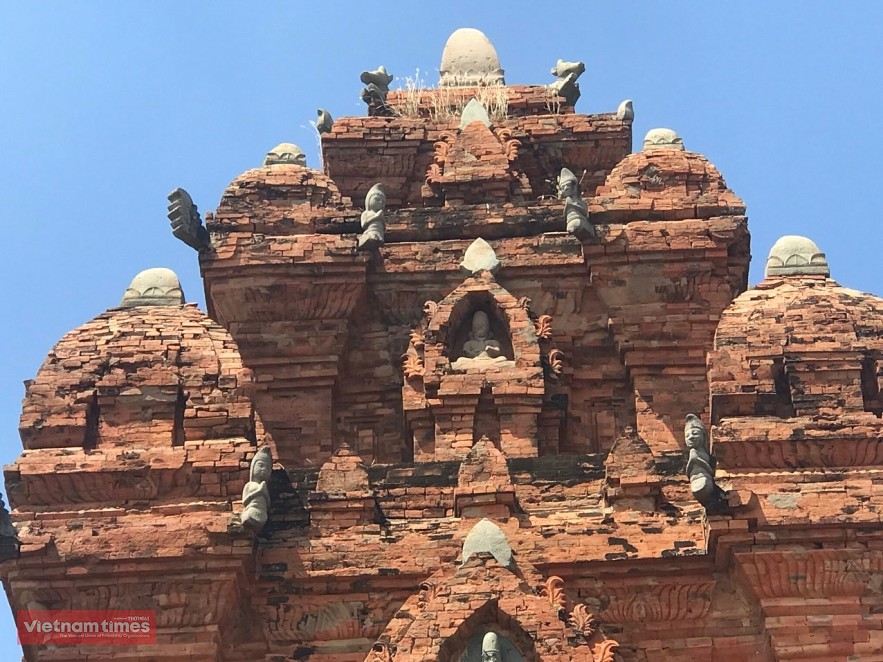 |
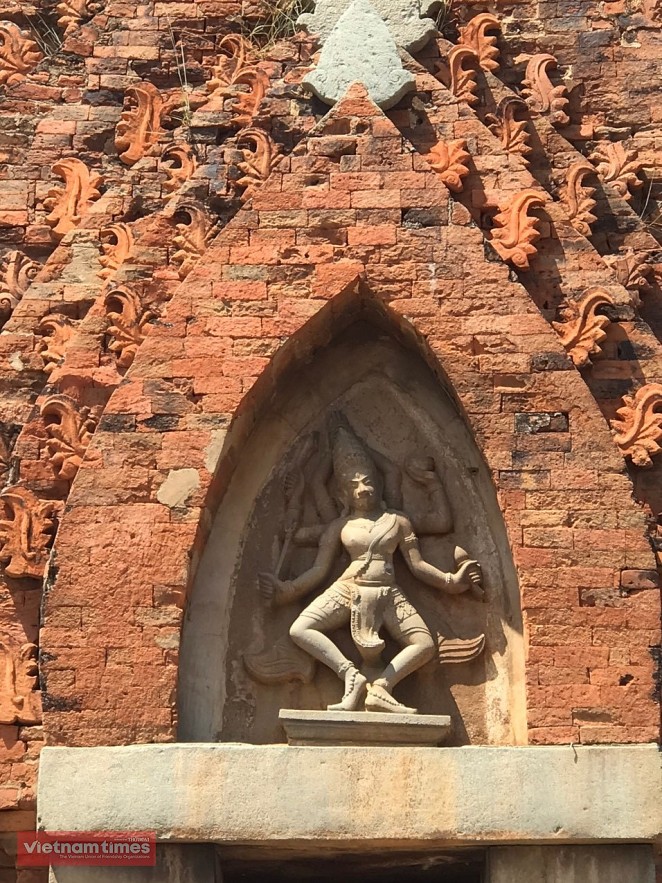 |
Land of cultural heritage
According to researchers, the Cham people originated in the South Central region of the country. Due to historical fluctuations, they migrated to many places. Currently, the Cham people live in the provinces and cities of the South Central and Southern regions, in which they are concentrated in the areas of Ninh Thuan, Binh Thuan and An Giang.
The Cham cultural imprint in Vietnam's cultural heritage is clearly reflected in architecture, sculpture (temples, reliefs, statues), customs, festivals, beliefs, religions, and languages. speaking, writing, music, performing arts, embroidery, patterns and ceramics.
At present, most have been lost, with only pottery and brocade still developing. Pottery is still growing in Bau Truc (Ninh Thuan). Some ceramic craftsmen have turned to produce unique cultural products such as statues, Cham towers, decorative items, and fine arts to serve tourism.
Bau Truc is also a Cham ethnic, cultural tourist site of Ninh Thuan province, which has been invested for development. Experts say that Bau Truc ceramics are the oldest in the South East region, considered a UNESCO Intangible Cultural Heritage.
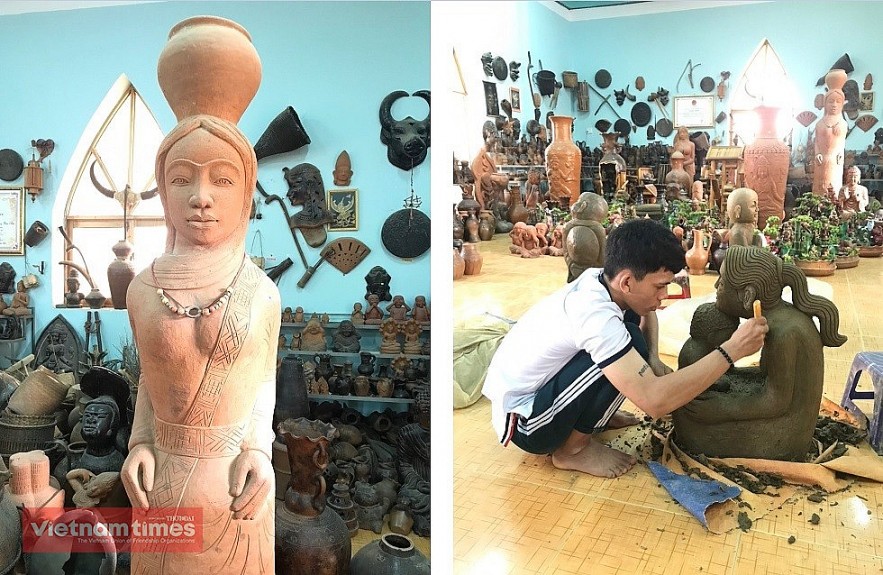 |
| The Cham people's traditional Bau Truc pottery is still preserved and developed in Ninh Thuan. Photo: ThuyHang |
Cham culture is unique and very famous in Southeast Asia. This culture exists systematically, entirely, with layers of culture floating and submerged in the ground, creating a traditional culture imbued with national identity. Despite many changes and events, the Cham people still retain the cultural values left by their ancestors.
Along the central coast, from Quang Binh to Binh Thuan, where the Cham people previously resided, there are cultural vestiges of the Cham people, in which mainly ancient mossy towers, such as the Lam Ap ancient citadel in Quang Binh; the Silver tower, Binh Lam tower, Canh Tien tower and Cha Ban citadel, Thu Thien tower and many more.
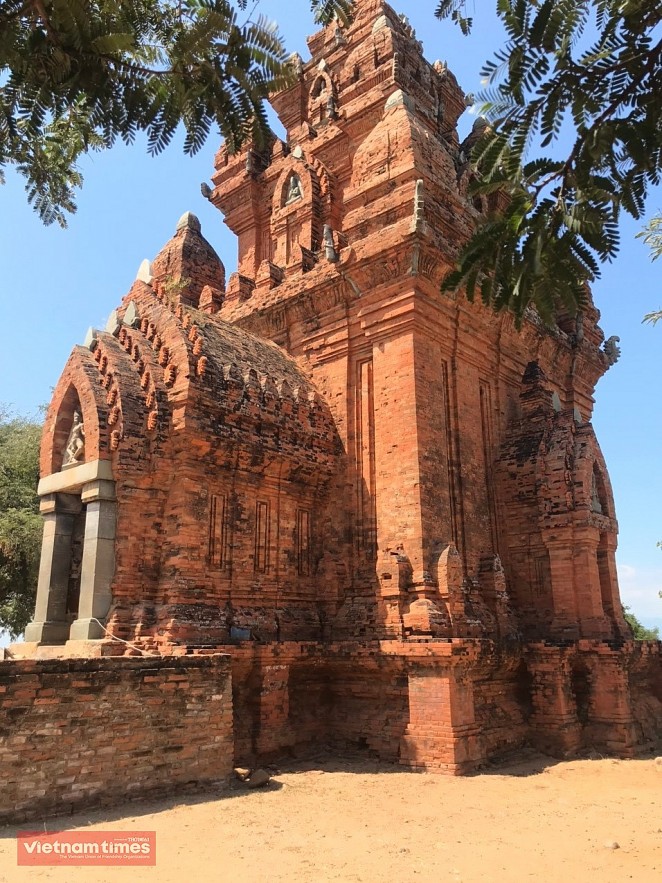 |
In Quang Nam, we can see many of the most massive and diverse towers, such as the My Son relic site, including 71 towers. Now only 21 towers remain. In addition, there are Bang An tower, Chien Dan tower and Khuong My tower.
Besides the relics, the material culture of the Cham ethnic people is also reflected in the handicrafts. According to studies, the Cham people did many crafts such as pottery, weaving, boat building and jewelry making.
Regarding architecture, researchers estimate that the Cham people have reached a high level of architectural art through the monuments and temples left by the Cham people. The Cham towers are evaluated as on par with the Angkor ruins of Cambodia or other temples of Southeast Asia.
A unique feature is the intangible culture of the Cham ethnic group is the Kate Festival. This is the festival of the Brahmin Cham people in Binh Thuan province, restored in 2005 at the national-level relic Po Sha Inu with full of rituals and unique traditional folklore values.
The festival is to remember ancestors and grandparents, praying for favorable weather and good crops, couple's harmony, and the proliferation of people and things.
In 2017, the Cham people of Ninh Thuan received the certificate for the Kate Festival to be included in the List of National Intangible Cultural Heritage. Today, Kate Festival is not only a joy of the Cham people but also one of the great festivals of the Kinh, Cham, and Ra Glai ethnic groups.
Su Van Tien, a tour guide at Porong Grai tower tourist complex, said that Cham people are always proud of a flourishing and unique cultural identity and its uniqueness, and at the same time always wished to preserve and promote the diverse characteristics of the ethnic groups of Vietnam.
Out of more than 177,000 Cham people scattered in Vietnam, the Cham people live in Ninh Thuan the most, amounting to more than 82,000 people, mainly making a living by farming and traditional crafts.
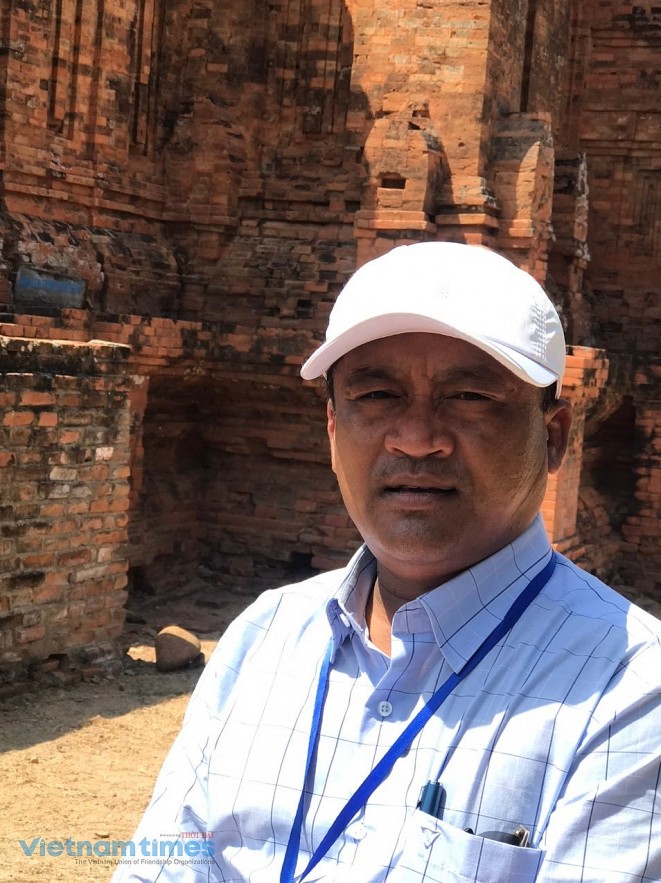 |
Cham people build towers to express their beliefs and feng shui, which is the belief of worshipping the Holy Mother, scattered on the central strip of land from Nha Trang to Ninh Thuan.
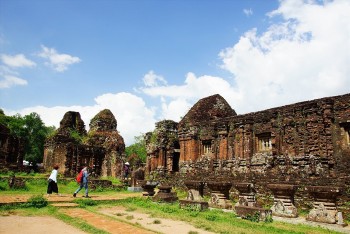 | My Son Sanctuary: an Indian Cultural Space in Vietnam My Son Sanctuary (Duy Phu Commune, Duy Xuyen District, Quang Nam Province) is one of the main Hindu temples in Southeast Asia and Vietnam. |
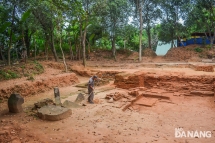 | New findings of Champa era relic site in Da Nang announced Archaeologists unveiled new results in the recent excavation of the Phong Le relic site dating back to the Champa era (from the 2nd century until 1832) ... |
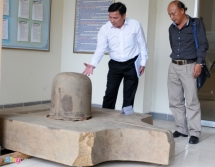 | Champa culture's Linga-Yoni set was discovered in Quang Ngai Champa culture's Linga-Yoni set was found in Quang Ngai |
In topics
Recommended
 Travel
Travel
Vietnam Through Australian Eyes: Land of Flavor, Warmth, and Timeless Charm
 Travel
Travel
Strategies for Sustainable Growth of Vietnam’s Tourism from International Markets
 Travel
Travel
Vietnam Strengthens Its Presence On The Global Tourism Map
 Multimedia
Multimedia
Phong Nha-Ke Bang National Park Named Top Adventure Travel Site
Popular article
 Travel
Travel
Vietnam Welcomes Record-High Number of International Visitors
 Travel
Travel
Luxury Train From Hanoi To Hai Phong To Be Launched In May
 Travel
Travel
Phong Nha Named Top Budget-Friendly Travel Destination for Spring 2025: Agoda
 Travel
Travel





